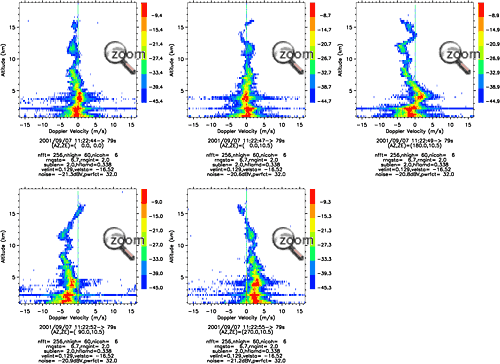
Typhoon Nari, 2001
These figures show the Doppler spectrum obtained during the approach of typhoon Nari in 2001, when there was no precipitation. In the three top figures the directions of the radar antenna beam are vertical, north, and south (as shown from left to right), and in the bottom two figures, the directions are east and west. Except for the vertical beam, the beams are all inclined at a zenith angle of 10.5°. The horizontal axis represents the Doppler velocity, and the center peak is the signal component of the ground clutter. The color scale represents the intensity of the scattered signals. The peak exhibits shifts to the right and left at different heights due to variations in wind velocity. The vertical axis represents distance from the antenna; signals can be received from a maximum distance of 16 km.
(09/07/2001 11:22 2.00 ms 8 bits)

|